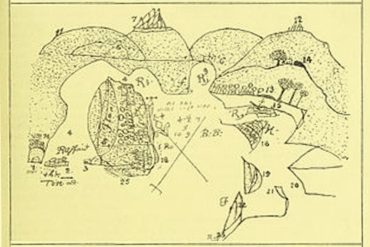The October 7 Hamas attack and the subsequent retaliatory actions by Israel have sparked intense debate worldwide. The ongoing conflict has become a focal point of geopolitical discussions, with analysts considering potential endgame scenarios.
However, a cursory understanding of West-Asian geopolitics informs us that clear-cut endgames are seldom achieved. Instead, political contests persist, manifesting as conventional conflicts, proxy wars, acts of terrorism, violation of human rights and intense battles of narratives — all without definitive endgames.
This article analyses the tactical and strategic objectives behind Hamas’s recent attacks. It also examines the challenges that Israel may encounter in dismantling Hamas and its capabilities in Gaza.
Additionally, the article will explore whether these objectives hint at possible endgame scenarios or if they signify a protracted conflict characterised by an intense battle of rhetoric and war of narratives.
Hamas’s intentions behind the attacks
The Hamas attacks on Israel have shifted the global attention back to the Israel-Palestine issue. In the recent past, the possibility of a two-state solution (statehood for Palestine) has taken a back seat, partially due to the ongoing Russia-Ukraine conflict, coupled with other international events. The lack of attention to the Israel-Palestine conflict meant that Israel was getting a free pass in its diplomatic blitzkrieg, through which it was trying to normalise its relations with the Arab countries.
By signing the Abraham Accords in 2020 and establishing diplomatic relations with Arab countries such as the United Arab Emirates (UAE), Bahrain and Morocco, Israel was actively trying to normalise its relations with Saudi Arabia. Had the agreement between Israel and Saudi Arabia been formalised, it would have marked a new beginning in the geopolitical alignments of West Asia, which would have tilted in favour of Israel. It would have given significant diplomatic acceptance to Israel, whose existence in West Asia was contested during the Cold War Era.
The Hamas attack has stalled the prospects of a historic peace agreement between Israel and Saudi Arabia. Moreover, Hamas called the October 7 attack on Israel “The Al-Aqsa Flood” and presented it as a response to the Israeli atrocities in the West Bank. This naming tactic is aimed at garnering support from the Palestinian population in the West Bank, who view these attacks as a form of resistance against Israeli aggression.
Consequently, these attacks are aimed at bolstering Hamas’s popularity among the Palestinians residing in the West Bank, especially those who perceive the Palestinian Authority (PA), led by Mahmoud Abbas, to be hand-in-glove with Israel. It’s plausible that this attack may undermine Mahmoud Abbas’s popularity and allow Hamas to gain influence in the West Bank.
By breaching the Israeli border fence and inflicting heavy casualties on Israeli Defence Forces, Hamas outmanoeuvred Israeli intelligence, exposed the complacency and broke the hubris that had built up. By doing so, Hamas has achieved a tactical success.
However, the same is not visible on the strategic front. Unlike Anwar Sadat’s Egypt in 1973, Hamas is not employing war to resolve a stalemate in negotiations. Provoking Israel has cost the lives of tens of thousands of Gazans; many others are facing unimaginable suffering, death and destruction as a result of Israel’s retaliatory strikes.
Israel is being condemned for its disproportionate actions; one is witness to massive protests worldwide condemning Israel’s aggression. Israeli actions could also inflame other Arab countries. However, the crucial question is: Will these attacks achieve any strategic objective for Hamas? Can these attacks deter Israel from establishing colonies in the West Bank?
Israeli Perspective
The October 7 attacks have posed greater tactical and strategic challenges. The brutality of Hamas’s actions exerted considerable pressure on Israel to retaliate decisively. Failure to act decisively would have made the recently formed Unity government in Israel appear weak, not only in the eyes of its adversaries but also in the eyes of the public. However, can Israel eliminate or eradicate Hamas from Gaza?
This is a challenging proposition – both in theory and practice. As the former Israeli Prime Minister Ehud Barak noted:
We cannot completely eliminate Hamas. Hamas is an ideological movement that exists in the Palestinian people’s aspirations, their hearts, and their minds.
Hamas’s influence extends beyond military capabilities and into the realm of ideology and public sentiment, making it a persistent challenge for any military campaign.
Operationally, the ongoing Israeli assault becomes challenging by the fact that the Gaza Strip is densely populated and has a vast concentration of civilians living in a congested urban space. The probability of Hamas operatives mingling with the Gazan population and attempting to escape the Israeli assault is likely.
Differentiating between Hamas militants and the civilian population is a formidable challenge in this intense, high-stakes conflict. As articulated by the Israeli historian and public intellectual Yuval Noah Harari, Israel will effectively have to fight on two fronts.
First, it will have to clinically hit Hamas and hammer its fighting capabilities within an urban setting where the likelihood of Hamas operatives ambushing Israeli soldiers will be very high.
Second, Israel must act in a way that minimises the loss of Palestinian lives, allowing room for tensions to ease over time and preserving the possibility of future peace, even if immediate peace remains elusive in the coming weeks or months.
Both these scenarios are challenging to achieve. Nevertheless, given Israel’s superior military strength and technological edge, the potential success of hammering down Hamas’s operational capabilities is plausible. However, this alone won’t suffice for Israel. Israel faces a more significant challenge: the need to re-establish deterrence, which faltered in the aftermath of the Hamas attack.
In his recent article, Blaise Misztal underscores that the Israeli deterrence against non-state actors like Hamas and Hezbollah earlier had been operational primarily on three pillars:
Deterrence by Denial
At the core of Israel’s deterrence strategy was the principle of denial. This pillar emphasised the importance of consistently employing force to maintain a strategic edge, thus denying Hamas any misadventure.
The Israeli Defense Forces (IDF) relied on their operational and intelligence superiority to weaken and dismantle Hamas’s capabilities, infrastructure and leadership. By employing force, Israel’s military leadership aimed not only to neutralise and disrupt immediate threats but also to force Hamas to reconsider the consequences of launching attacks.
Extended Deterrence Dynamics
The second pillar involved extending deterrence dynamics by implementing the “Mowing the Grass” technique. Just like regularly mowing a lawn keeps it in check, Israel believed periodic military actions were necessary to weaken potential threats. By using this strategy, Israel aimed to consistently undermine the power of groups like Hamas and Islamic Jihad, making it harder for them to rebuild and pose an immediate danger.
This approach isn’t just about specific targets; it also sends a message to other groups, like Hezbollah. The idea was that Israel could deter various adversaries by demonstrating strong and effective military actions, making them think twice before engaging in hostilities.
Deterrence through Economic Incentivisation
The Israeli military leadership contemplated incentivising peace through economic measures. This was based on the assumption that outfits like Hamas and Hezbollah are not just terror outfits but also political entities engaged in governing and supporting their populations.
This assumption led to the deployment of economic carrots and sticks—allowing Gazans to work in Israel after the 2021 conflict. Thus, by devising such economic incentives, Israeli leaders attempted to deter Hamas from engaging in conflict by betting that, as a political entity, Hamas would be reluctant to jeopardise their political standing by engaging in large-scale hostilities.
Over the past decade, Israel’s deterrence strategy successfully navigated challenges posed by groups like Hamas, Islamic Jihad, and Hezbollah to an extent. However, the unexpected setback on October 7, resulting from the Hamas attacks, has dealt a significant blow to the effectiveness of this strategy. It is now apparent that the existing approach may no longer effectively deter groups like Hezbollah in the northern regions. Consequently, Israel faces the imperative to devise a new deterrence strategy, one that can effectively counter threats not only from Hezbollah in the North or Islamic Jihad in the South but also from Iran.
Apart from re-establishing credible deterrence, Israel will confront a significant challenge in dealing with the potential power vacuum that may arise once it achieves its operational goal of eliminating Hamas from Gaza. The prospect of a volatile Gaza, combined with a power vacuum, will be a cause for concern, as it will provide a breeding ground for other extremist organisations.
But who will fill this power vacuum? Will it be the Fatah-ruled Palestinian Authority (PA)? Will the PA, given its governance track record of inefficiency and corruption, be able to control Gaza effectively?
This becomes especially pertinent considering Gaza’s urgent need for extensive infrastructural development in the aftermath of the Israeli assault. The displacement caused by this conflict will add to the challenge, which is already very complex.
Specific recommendations, mainly proposed by Americans and Israelis, advocate for interim arrangements in which regional countries, alongside international agencies, assume control of Gaza to ensure security and governance. The suggested candidates for this temporary responsibility might encompass Arab states and the United Nations, with backing from various governmental and non-governmental international organisations. Although this idea looks good on paper, will it be feasible to implement it on the ground?
Conclusion
The evolving situation raises many questions, indicating a lack of specific answers to the challenges posed by the ongoing conflict. The role and the impact of external players in this conflict remain shrouded in speculation and uncertainty.
Various geopolitical considerations compound this ambiguity. For instance, the ongoing military retaliation by Israel has raised questions about the increasing number of casualties and population displacement. The uncertainties regarding these issues make it difficult for the involved parties to navigate towards definitive endgame scenarios.
While the immediate concerns — such as achieving a ceasefire, halting the conflict, and securing the release of Israeli hostages — may find resolution, the broader issues surrounding the conflict present significant challenges. Addressing matters like the governance and reconstruction of Gaza, population displacement, and migration will remain a difficult challenge to deal with.
The loss of lives, compounded with psychological trauma experienced by the ordinary population, could further result in a war of words, which will create difficulties in arriving at a resolution to this ongoing conflict. Instead, the situation is more likely to oscillate between protracted conflicts and episodic periods of calmness, creating a repetitive cycle.
-30-
Copyright©Madras Courier, All Rights Reserved. You may share using our article tools. Please don't cut articles from madrascourier.com and redistribute by email, post to the web, mobile phone or social media.Please send in your feed back and comments to [email protected]











